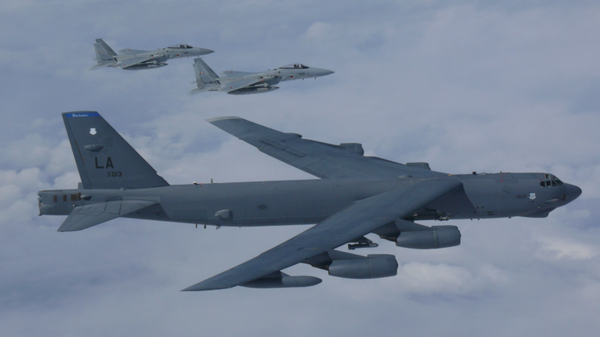The US Air Force conducted a first “captive carry flight test” of its upcoming AGM-183A Air-Launched Rapid Response Weapon (or ARRW) hypersonic missile, Lockheed Martin announced at the 2019 Le Bourget International Air Show Monday. The weapon maker was previously awarded a $928 million contract to build an undefined number of hypersonic conventional strike weapons, according to CNBC report.
“We’re using the rapid prototyping authorities provided by Congress to quickly bring hypersonic weapon capabilities to the warfighter,” Dr. Will Roper, assistant secretary of the Air Force for Acquisition, Technology, and Logistics, said.
“We set out an aggressive schedule with ARRW. Getting to this flight test on time highlights the amazing work of our acquisition workforce and our partnership with Lockheed Martin and other industry partners.”
The “captive carry flight test” term means an unarmed version of the missile was strapped to a B-52 Stratofortress bomber, which then traveled aloft, allowing engineers to estimate various aerodynamic details. The weapon is expected to be ready by 2022.
A hypersonic missile is a type of cruise missile that can fly and maneuver at speeds exceeding five times the speed of sound (Mach 5). While ballistic missiles can reach those speeds with ease, their trajectories remain predictable, making them easier targets.
A missile flying at hypersonic speed becomes covered in a cloud of extremely hot plasma, which formerly made controlling the missile via radio a remarkably difficult task. On the plus side, the same plasma cloud absorbs radar waves, making the missile very difficult to detect.
According to CNBC, the US is scrambling to catch up with Russia and China in the development of hypersonic armaments.
“The air-launched cruise missile dubbed ‘Kinzhal,’ which means ‘dagger’ in Russian, has been tested at least three times and was mounted and launched 12 times from a Russian MiG-31 fighter jet,” the website writes.
In an earlier March 2018 report, CNBC cited sources “who have direct knowledge of American intelligence reports” claiming that Russia had allegedly launched the Kinzhal an estimated three to twelve times.
In August, China announced its first successful test of a hypersonic aircraft.
In March 2018, Russian President Vladimir Putin unveiled several advanced weapons currently in development. Two – the Kinzhal and an intercontinental ballistic missile (ICBM)-mounted glider Avangard – are hypersonic missiles.




